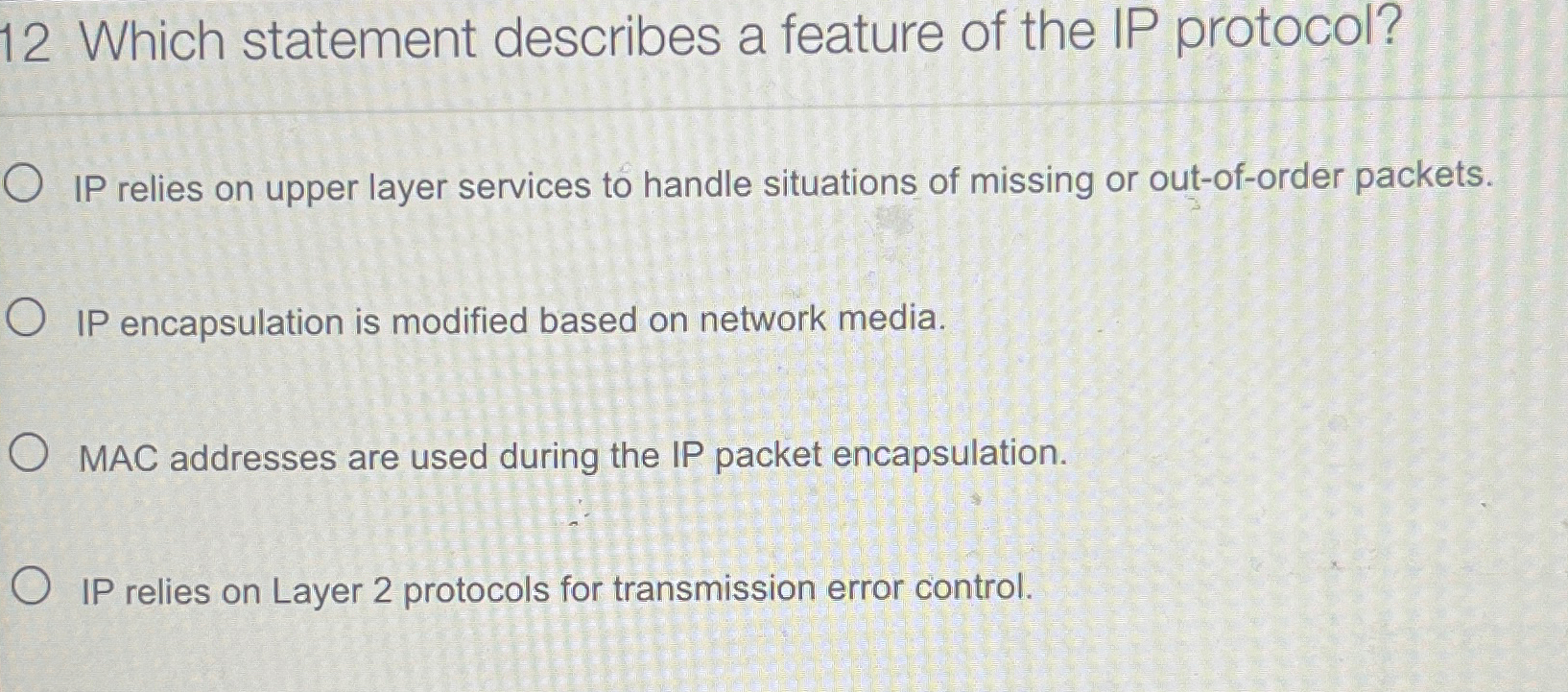The Internet Protocol (IP) is a foundational protocol used in networking to route and deliver data packets across networks, including the internet. IP ensures that data sent from one device reaches its destination correctly, using unique addressing systems. Below are some common statements about the IP protocol and which one best describes its features.
Key Features of the IP Protocol
1. IP Defines Logical Addressing for Devices
- Correct: One of the main features of the IP protocol is that it defines logical addressing for devices in a network. The IP address serves as a unique identifier for devices connected to the network, allowing data to be routed properly between different systems.
2. IP Ensures Reliable Data Delivery
- Incorrect: While IP plays a crucial role in routing data, it does not ensure reliable delivery. IP is considered an unreliable protocol because it does not guarantee the delivery of packets, nor does it ensure that they are delivered in the correct order. For reliability, protocols like Transmission Control Protocol (TCP) are used in conjunction with IP.
3. IP Provides Flow Control
- Incorrect: IP does not provide flow control. Flow control refers to managing the rate of data transmission between devices to prevent congestion. This feature is handled by higher-layer protocols, such as TCP, rather than IP.
4. IP Supports Both IPv4 and IPv6 Addressing
- Correct: The IP protocol supports both IPv4 and IPv6 addressing systems. IPv4 uses a 32-bit address format, while IPv6 uses a 128-bit address format, allowing for a much larger address space. The transition from IPv4 to IPv6 is ongoing due to the growing number of connected devices worldwide.
Conclusion
The statement that best describes a feature of the IP protocol is that IP defines logical addressing for devices. This addressing is essential for data routing across networks, ensuring packets are delivered to the correct destination, even though the protocol itself does not ensure the reliability of the delivery.
Share this content:







